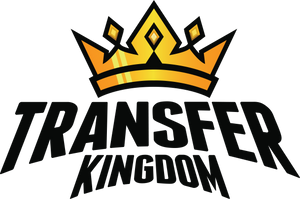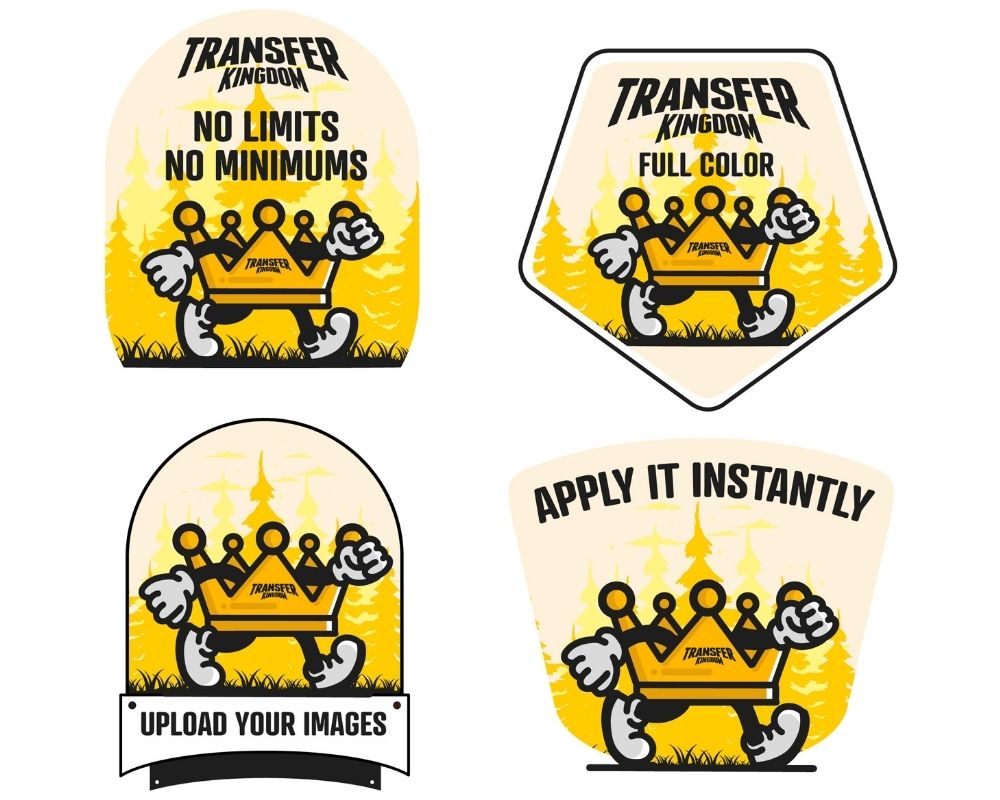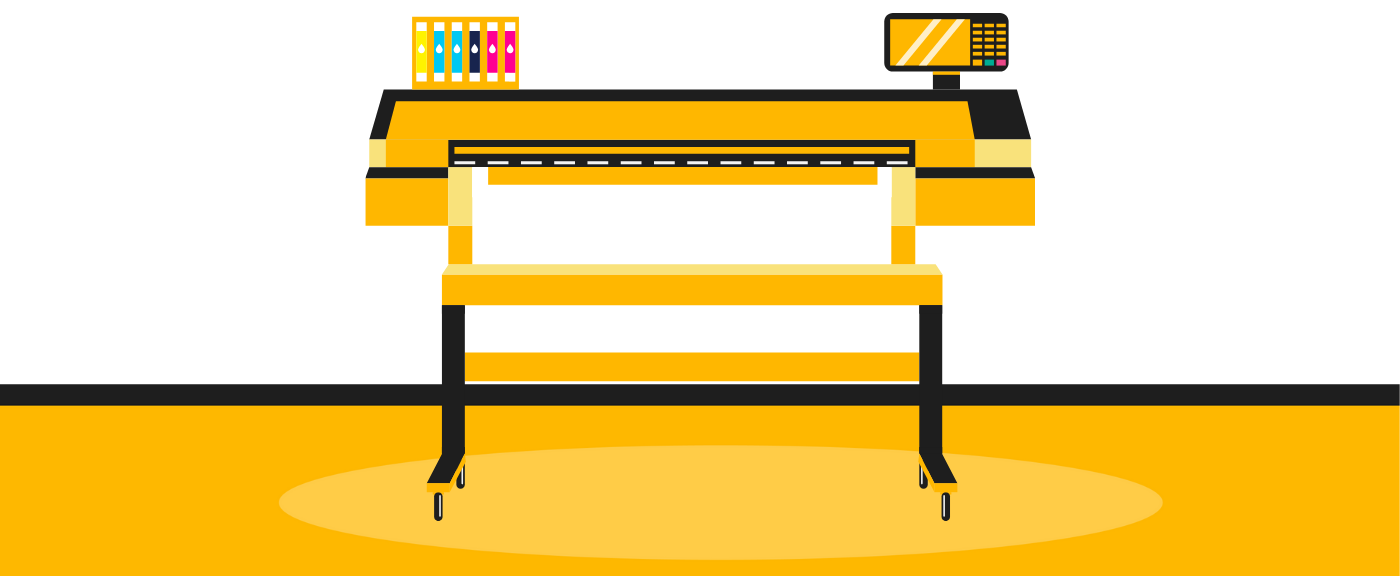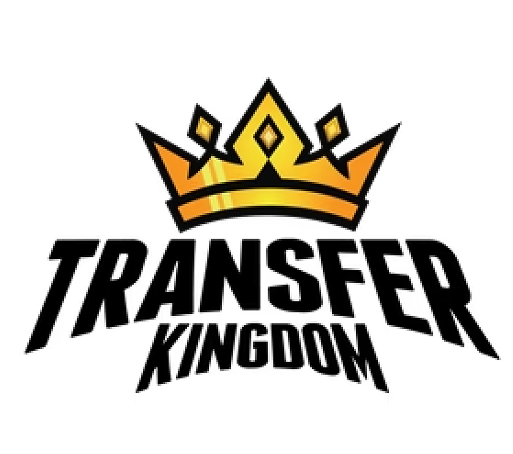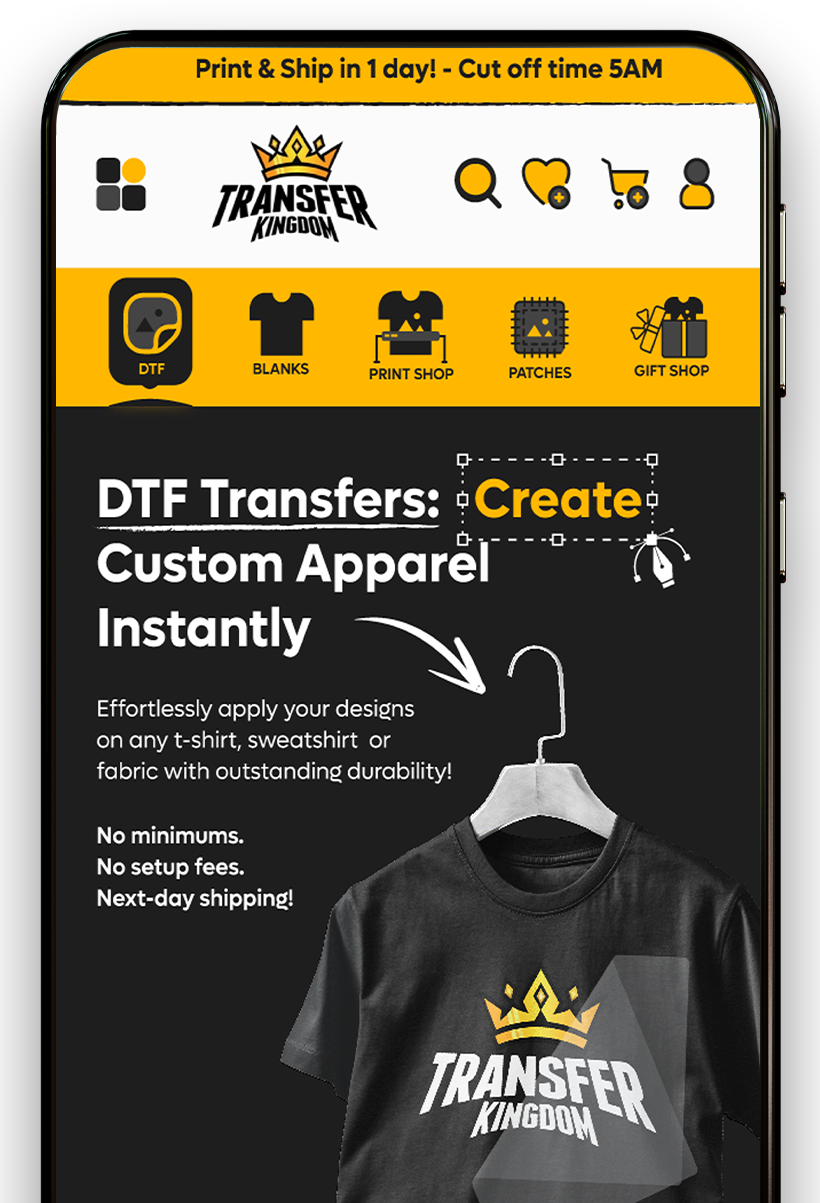How to List and Sell T-Shirts on Amazon
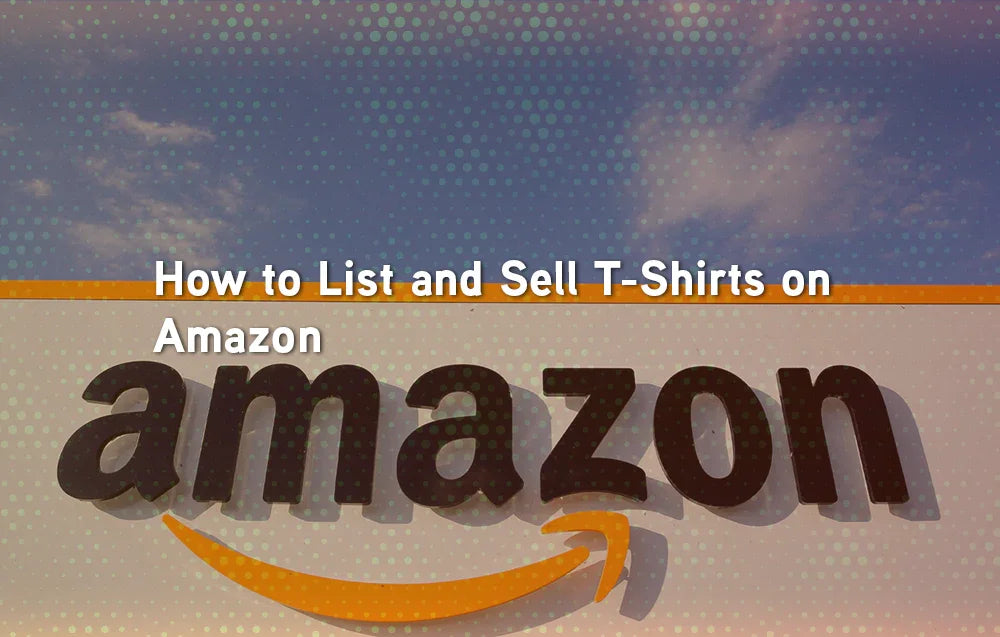
Amazon is one of the biggest opportunities for selling custom t-shirts, but competition is fierce. To succeed, you need more than a great design—you need proper listings, optimized pricing, and consistent quality. This guide walks you through how to list and sell t-shirts on Amazon using DTF transfers, so your products stand out and win repeat customers.
Why Amazon is a Game-Changer for T-Shirt Sellers
Amazon gives you instant access to millions of shoppers worldwide. Unlike Etsy, which leans on handmade and personalized goods, Amazon customers are focused on speed, convenience, and value. That means you need professional-looking t-shirts, clear listings, and competitive pricing to win.
👉 With Custom DTF Transfers, you can produce vibrant, retail-quality shirts without upfront costs for big equipment. Amazon’s scale + DTF printing flexibility = a proven formula for growing apparel brands.
Step 1: Choose the Right Selling Model
Amazon offers two main paths for apparel:
Amazon Merch on Demand – You upload designs, Amazon prints and ships. Great for passive income, but lower margins and limited control.
FBM (Fulfilled by Merchant) – You manage inventory, printing, and shipping. Higher profits, more control. Perfect if you’re using DTF Transfers Ready-to-Press.
📌 Quick Recap: Merch = easy start, FBM = bigger profits + brand control.
Step 2: Prepare High-Quality Shirts
Quality determines reviews—and reviews determine sales.
Use durable Blank Apparel.
Apply transfers with correct press settings.
Always pre-press and post-press for stronger adhesion.
Test multiple designs on a Custom Gang Sheet before bulk runs.
💡 Pro Tip: A single bad batch can tank your seller rating—test before scaling.
Step 3: Create Optimized Listings
Amazon listings require precision:
Title: Use SEO keywords (e.g., “Funny Teacher T-Shirt – DTF Print – Cotton Tee”).
Images: Use lifestyle mockups + close-ups of print detail.
Bullet Points: Highlight fabric, print method, and wash durability.
Description: Tell the story—who it’s for, when to wear it, why it’s unique.
👉 Try Premade Gang Sheets to create multiple trendy designs and test which ones convert best.
Step 4: Pricing Your T-Shirts
Amazon customers are price-sensitive but will pay more for quality.
Calculate costs (blank + transfer + packaging + Amazon fees).
Standard retail price: $18–25 per shirt.
Offer bundles or discounts (e.g., 2 shirts for $35).
📌 Example:
Blank Shirt = $5
Transfer = $2
Packaging + Shipping = $3
Amazon Fee = $5
Total = $15 → Sell for $22.95
Step 5: Marketing & Driving Traffic
Amazon gives exposure, but boosting sales helps you rank higher.
Amazon Ads: Sponsored listings target keywords.
Social Media Traffic: Send TikTok or Instagram viewers to Amazon listing.
Seasonal Promotions: Push designs around holidays like Halloween and Christmas.
💡 Pro Tip: The more sales you drive in the first 30 days, the higher Amazon ranks your shirt organically.

Step 6: Manage Reviews and Customer Service
Amazon shoppers rely heavily on reviews.
Include washing instructions (cold wash, inside out, no softeners).
Respond quickly to questions.
Offer fast replacements if issues occur.
Add package inserts thanking buyers + inviting reviews.
👉 Using reliable DTF Gang Sheet Uploader ensures fewer misprints, which means fewer bad reviews.

Case Study: Amazon Seller Scaling with DTF
A small Texas seller started on Amazon FBM with just 20 shirts. At first, sales were slow, but after refining their listings, adding better mockups, and switching to Custom Gang Sheets, they cut costs and increased design variety. Within six months, they scaled to 200+ monthly sales and a 4.8-star rating.
📌 Lesson: Listing optimization + reliable transfers = scalable growth.
Table: Merch vs FBM Comparison
| Feature | Merch on Demand | FBM (Self Fulfillment) |
|---|---|---|
| Control | Low | High |
| Profit Margins | Low (Amazon cuts in) | Higher |
| Startup Cost | Very low | Moderate (blanks + press) |
| Scalability | Limited to Amazon | Full brand potential |
| Best For | Beginners, passive income | Brand builders, serious sellers |
Conclusion
Selling t-shirts on Amazon is one of the fastest ways to reach a massive audience, but success requires more than uploading a design. You need professional-quality shirts, optimized listings, and smart pricing strategies. With the right approach, you can build a profitable Amazon t-shirt business in 2025.
Whether you start with Merch on Demand or scale with FBM, the key is consistency. Use DTF Transfers Ready-to-Press and tools like the Gang Sheet Builder to produce shirts that meet Amazon’s high standards—and your customers’ expectations.
👉 Don’t just list t-shirts—list them right, sell them smart, and grow your apparel brand with confidence.
Is it hard to sell t-shirts on Amazon?
No, but competition is strong—quality and listings matter.
Which is better: Merch or FBM?
Merch is easier, FBM offers more profit and control.
How much money do I need to start?
Merch is almost free; FBM requires ~$200–300 for samples.
What kind of shirts sell best?
Niche, funny, seasonal, and lifestyle designs.
Can I sell holiday collections?
Yes—seasonal shirts like Halloween and Christmas do well.
Do I need my own brand to sell?
No, but branding helps long-term growth.
How do I avoid bad reviews?
Use quality blanks and DTF transfers, include care instructions.
Do I need Amazon ads?
They help new sellers rank faster.
Can I fulfill orders myself?
Yes, through FBM, but you handle shipping.
Where can I buy transfers for Amazon shirts?
At Transfer Kingdom: DTF Transfers by Size.
